One of the most stressful jobs on a dairy farm is identifying cows in heat. While calving is the busiest time, the breeding season is probably more stressful because on herds which practice artificial insemination (AI), the farmer has to identify the cows in heat before submitting them for AI. The implications of a poor submission rate are long-lasting. Calving interval slips, the percentage of the herd calved within six weeks declines and the empty rate at the end of a fixed breeding period is likely to be higher.
These issues are compounded when cows calve all year round. In such systems, cows come bulling all year round too and identifying these cows is extra difficult. In block-calving systems, when breeding is compressed into a 12-week period, bulling activity is relatively high, at least for the first half of the breeding season which makes it easier to identify which cows are in heat as it is likely that a number of cows will be bulling at once. But in all-year-round systems and depending on herd size this is less likely to happen.
Housed indoors all year round
Another complicating factor is when cows are housed indoors all year round. Research work has shown that cows are less likely to show signs of heat and show heat for shorter periods when housed, compared with cows at grass.
These were the problems experienced by Marcus Grey, who owns the renowned Killadeas herd of pedigree Jersey cows outside Oghill in Co Fermanagh. Marcus runs the 230-strong herd with help from his brother Gordon who is the local vet and Gareth who makes Tickety-Moo ice-cream from the farm’s milk.
The Grey’s system of farming is to calve all year round and cows are housed all year round too, with fresh grass being zero-grazed during the summer. There are only one or two fields that the cows graze. Marcus brings in three loads of zero-grazed grass per day and has been doing zero-grazing for the past four years.
First farmers in the country to have installed a DeLaval Herd Navigator
No stranger to technology, Marcus has been using three DeLaval robots to milk the herd for the past five years. Even though there are 230 cows in the herd, not all of these are in milk at the same time. When I visited the farm in late April, there were 184 cows milking, which works out at 61 cows per robot.
While the robots did the milking, Marcus was still having to pick out the cows in heat and this was a struggle.
“We had been using activity meters but these just weren’t good enough and tail paint was too much effort. Calving interval has slipped to 435 days and while conception rate was high at between 60 and 80% per service, the submission rate was just too low as we weren’t picking up all the cows in heat.”
Once again the Grey’s turned to technology to find a solution. They are now the first farmers in the country that have installed a DeLaval Herd Navigator.
The Herd Navigator is effectively a mini laboratory. It tests milk for progesterone levels which indicates the stage of the fertility cycle the cow is at, it tests for LDH levels which is an enzyme linked with mastitis and it also tests for BHB levels which indicates ketosis.
The whole process is automated and is linked to the three robots and the computer system. The big attraction for Marcus was the progesterone testing – mastitis and ketosis weren’t big problems on the farm to begin with, but fertility was. Average somatic cell count in 2015, before the Herd Navigator was installed, was 200,000.
The Herd Navigator is a square box, about half the size of a fridge, that sits on the wall of the farm office. As a piece of equipment, it looks fairly boring but is actually extremely hi-tech. It collects a sample of milk from each cow every few days and analyses it for progesterone, LDH and BHB and tracks the trend in levels of each in the milk. So effectively it is an early warning system for ketosis and mastitis.
Gold standard
Since the Herd Navigator was installed last January, Marcus has not used one mastitis tube on the herd. When a mastitis warning appears for a cow, he uses Uddermint for a few days and this prevents mastitis from developing.
In terms of progesterone, measuring progesterone levels is the gold standard when it comes to heat detection. Over the course of a three-week follicular cycle, progesterone levels will rise gradually and then suddenly crash around the time of ovulation. By tracking the trends in progesterone levels, the Herd Navigator can more accurately determine the best time for AI.
If progesterone levels remain high for more than 21 days after service it is likely that the cow is pregnant. A sudden drop in progesterone levels would indicate pregnancy loss and embryo mortality. Tracking progesterone can also identify irregularities in cycling activity. If a cow hasn’t been served but has high progesterone levels it could indicate a luteal cyst or if progesterone levels were staying low a follicular cysts could be present.
“One of the big advantages of all of this information is that it is in real time so I can act on it quickly. The system is 100% accurate. Before the Herd Navigator was installed Gordon used to call once a week to scan whatever cows were needed for pregnancy diagnosis, non-cyclers and pre-breeding scans. We scanned as normal for the first few weeks after the Herd Navigator starting working but Gordon verified everything that the Herd Navigator was telling us so now I rely 100% on it,” Marcus says.
Speaking at a DeLaval open day held on the farm recently, Stuart Fulton from DeLaval explained that the Herd Navigator was developed in a joint venture between DeLaval and FOSS, who supply instrumentation and testing equipment to the dairy processing and milk testing sector.
Value for money
One Herd Navigator can be used on up to eight robots or a 32-unit herringbone parlour, due to restrictions on the number of sampling points. Like all new technology, the system comes at a cost. The Herd Navigator cost the Greys £50,000 (€64,000) plus VAT. On top of this, there is the cost of running the Herd Navigator, which is about €80 per cow per year. This is for the consumables or testing kits required to carry out the various tests.
Despite the heavy investment, Marcus and Gordon Grey think it’s value for money, mostly from the improved fertility performance. Submission rates have increased substantially since the Herd Navigator was commissioned and calving interval is expected to drop to an impressive 365 days this year.
While the savings from less mastitis and ketosis will be small on the Grey farm because they weren’t much of a problem to begin with, there will be savings from better fertility. No scanning is now being carried out while cows would have been scanned on average at least three times a year previously.
Submission rates have improved so much that they have had to make a decision not to AI all the cows that have come on heat because the calving facilities will be under too much pressure if all cows that were on heat were inseminated.
“To maintain an all-year-round calving pattern, we need to be inseminating 38 to 40 cows per month but for the last couple of months we’ve been doing over 60 cows. With only two calving pens we wouldn’t be able to cope and the robots would be under too much pressure with too many cows at peak so we have decided not to inseminate all the cows that have been identified in heat."
Day-to-day workload
The Killadeas herd of Jerseys produce about 7,200 litres of milk per year at 6% fat and 4% protein (741kg MS/cow) from 2.1t of meal per cow.
Depending on the stage of lactation, the Herd Navigator samples for different things at different frequencies. It tests for mastitis throughout lactation but only tests for ketosis in the first 60 days of lactation. It carries out progesterone testing between day 30 and day 240 of lactation. Once the animal has been identified pregnant, the frequency of sampling declines.
On a day-to-day basis all Marcus has to do is check the farm computer for alerts of cows with mastitis, ketosis or due for AI. The system even tells him the best time to AI the cow based on her expected ovulation time. A huge amount of information is being gathered, but most of this information is hidden in the background out of sight, but available to Marcus if he wants it. Most of the time he just looks at the home screen, which shows the cows coming in to heat and those ready for AI, along with any cows showing high readings for mastitis and ketosis.
The test kits have to be changed frequently, depending on the number of tests done. This is a simple procedure, much the same as changing the ink in a printer. DeLaval provides 24-back up support for the Herd Navigator.
Herd Navigator tests for signs of heat, mastitis and ketosis.It is fully automated and sends alerts to the farm computer.Most suited to robots.The Herd Navigator costs €64,000 plus €80/cow/year in testing kits. Read more
Full Agri Technology Focus Supplement
One of the most stressful jobs on a dairy farm is identifying cows in heat. While calving is the busiest time, the breeding season is probably more stressful because on herds which practice artificial insemination (AI), the farmer has to identify the cows in heat before submitting them for AI. The implications of a poor submission rate are long-lasting. Calving interval slips, the percentage of the herd calved within six weeks declines and the empty rate at the end of a fixed breeding period is likely to be higher.
These issues are compounded when cows calve all year round. In such systems, cows come bulling all year round too and identifying these cows is extra difficult. In block-calving systems, when breeding is compressed into a 12-week period, bulling activity is relatively high, at least for the first half of the breeding season which makes it easier to identify which cows are in heat as it is likely that a number of cows will be bulling at once. But in all-year-round systems and depending on herd size this is less likely to happen.
Housed indoors all year round
Another complicating factor is when cows are housed indoors all year round. Research work has shown that cows are less likely to show signs of heat and show heat for shorter periods when housed, compared with cows at grass.
These were the problems experienced by Marcus Grey, who owns the renowned Killadeas herd of pedigree Jersey cows outside Oghill in Co Fermanagh. Marcus runs the 230-strong herd with help from his brother Gordon who is the local vet and Gareth who makes Tickety-Moo ice-cream from the farm’s milk.
The Grey’s system of farming is to calve all year round and cows are housed all year round too, with fresh grass being zero-grazed during the summer. There are only one or two fields that the cows graze. Marcus brings in three loads of zero-grazed grass per day and has been doing zero-grazing for the past four years.
First farmers in the country to have installed a DeLaval Herd Navigator
No stranger to technology, Marcus has been using three DeLaval robots to milk the herd for the past five years. Even though there are 230 cows in the herd, not all of these are in milk at the same time. When I visited the farm in late April, there were 184 cows milking, which works out at 61 cows per robot.
While the robots did the milking, Marcus was still having to pick out the cows in heat and this was a struggle.
“We had been using activity meters but these just weren’t good enough and tail paint was too much effort. Calving interval has slipped to 435 days and while conception rate was high at between 60 and 80% per service, the submission rate was just too low as we weren’t picking up all the cows in heat.”
Once again the Grey’s turned to technology to find a solution. They are now the first farmers in the country that have installed a DeLaval Herd Navigator.
The Herd Navigator is effectively a mini laboratory. It tests milk for progesterone levels which indicates the stage of the fertility cycle the cow is at, it tests for LDH levels which is an enzyme linked with mastitis and it also tests for BHB levels which indicates ketosis.
The whole process is automated and is linked to the three robots and the computer system. The big attraction for Marcus was the progesterone testing – mastitis and ketosis weren’t big problems on the farm to begin with, but fertility was. Average somatic cell count in 2015, before the Herd Navigator was installed, was 200,000.
The Herd Navigator is a square box, about half the size of a fridge, that sits on the wall of the farm office. As a piece of equipment, it looks fairly boring but is actually extremely hi-tech. It collects a sample of milk from each cow every few days and analyses it for progesterone, LDH and BHB and tracks the trend in levels of each in the milk. So effectively it is an early warning system for ketosis and mastitis.
Gold standard
Since the Herd Navigator was installed last January, Marcus has not used one mastitis tube on the herd. When a mastitis warning appears for a cow, he uses Uddermint for a few days and this prevents mastitis from developing.
In terms of progesterone, measuring progesterone levels is the gold standard when it comes to heat detection. Over the course of a three-week follicular cycle, progesterone levels will rise gradually and then suddenly crash around the time of ovulation. By tracking the trends in progesterone levels, the Herd Navigator can more accurately determine the best time for AI.
If progesterone levels remain high for more than 21 days after service it is likely that the cow is pregnant. A sudden drop in progesterone levels would indicate pregnancy loss and embryo mortality. Tracking progesterone can also identify irregularities in cycling activity. If a cow hasn’t been served but has high progesterone levels it could indicate a luteal cyst or if progesterone levels were staying low a follicular cysts could be present.
“One of the big advantages of all of this information is that it is in real time so I can act on it quickly. The system is 100% accurate. Before the Herd Navigator was installed Gordon used to call once a week to scan whatever cows were needed for pregnancy diagnosis, non-cyclers and pre-breeding scans. We scanned as normal for the first few weeks after the Herd Navigator starting working but Gordon verified everything that the Herd Navigator was telling us so now I rely 100% on it,” Marcus says.
Speaking at a DeLaval open day held on the farm recently, Stuart Fulton from DeLaval explained that the Herd Navigator was developed in a joint venture between DeLaval and FOSS, who supply instrumentation and testing equipment to the dairy processing and milk testing sector.
Value for money
One Herd Navigator can be used on up to eight robots or a 32-unit herringbone parlour, due to restrictions on the number of sampling points. Like all new technology, the system comes at a cost. The Herd Navigator cost the Greys £50,000 (€64,000) plus VAT. On top of this, there is the cost of running the Herd Navigator, which is about €80 per cow per year. This is for the consumables or testing kits required to carry out the various tests.
Despite the heavy investment, Marcus and Gordon Grey think it’s value for money, mostly from the improved fertility performance. Submission rates have increased substantially since the Herd Navigator was commissioned and calving interval is expected to drop to an impressive 365 days this year.
While the savings from less mastitis and ketosis will be small on the Grey farm because they weren’t much of a problem to begin with, there will be savings from better fertility. No scanning is now being carried out while cows would have been scanned on average at least three times a year previously.
Submission rates have improved so much that they have had to make a decision not to AI all the cows that have come on heat because the calving facilities will be under too much pressure if all cows that were on heat were inseminated.
“To maintain an all-year-round calving pattern, we need to be inseminating 38 to 40 cows per month but for the last couple of months we’ve been doing over 60 cows. With only two calving pens we wouldn’t be able to cope and the robots would be under too much pressure with too many cows at peak so we have decided not to inseminate all the cows that have been identified in heat."
Day-to-day workload
The Killadeas herd of Jerseys produce about 7,200 litres of milk per year at 6% fat and 4% protein (741kg MS/cow) from 2.1t of meal per cow.
Depending on the stage of lactation, the Herd Navigator samples for different things at different frequencies. It tests for mastitis throughout lactation but only tests for ketosis in the first 60 days of lactation. It carries out progesterone testing between day 30 and day 240 of lactation. Once the animal has been identified pregnant, the frequency of sampling declines.
On a day-to-day basis all Marcus has to do is check the farm computer for alerts of cows with mastitis, ketosis or due for AI. The system even tells him the best time to AI the cow based on her expected ovulation time. A huge amount of information is being gathered, but most of this information is hidden in the background out of sight, but available to Marcus if he wants it. Most of the time he just looks at the home screen, which shows the cows coming in to heat and those ready for AI, along with any cows showing high readings for mastitis and ketosis.
The test kits have to be changed frequently, depending on the number of tests done. This is a simple procedure, much the same as changing the ink in a printer. DeLaval provides 24-back up support for the Herd Navigator.
Herd Navigator tests for signs of heat, mastitis and ketosis.It is fully automated and sends alerts to the farm computer.Most suited to robots.The Herd Navigator costs €64,000 plus €80/cow/year in testing kits. Read more
Full Agri Technology Focus Supplement




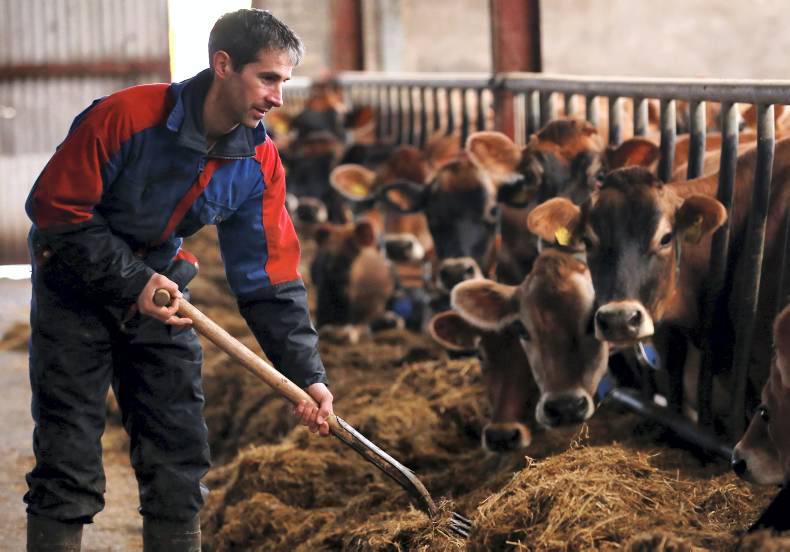
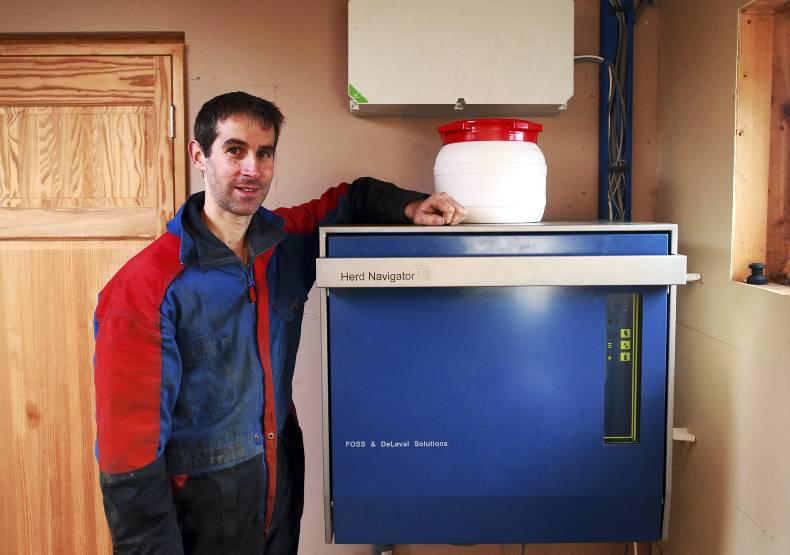
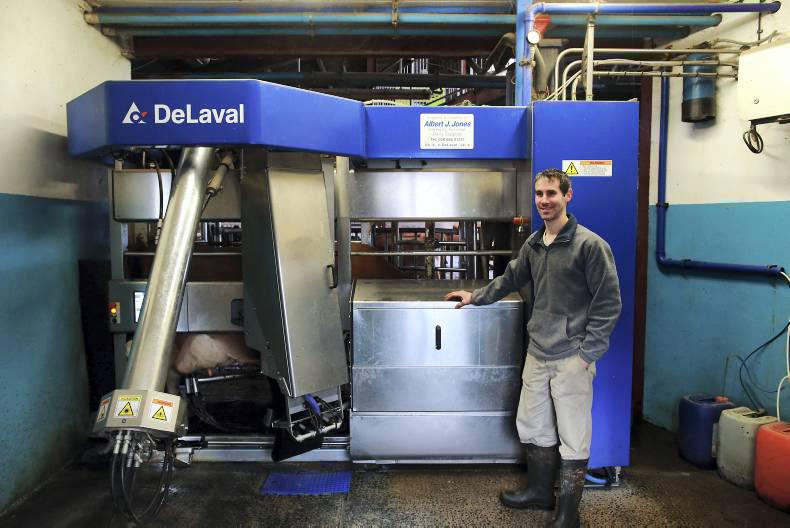
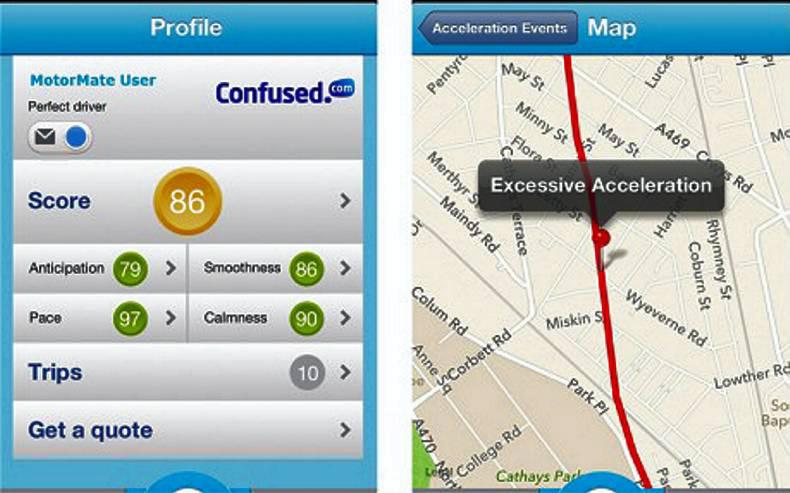
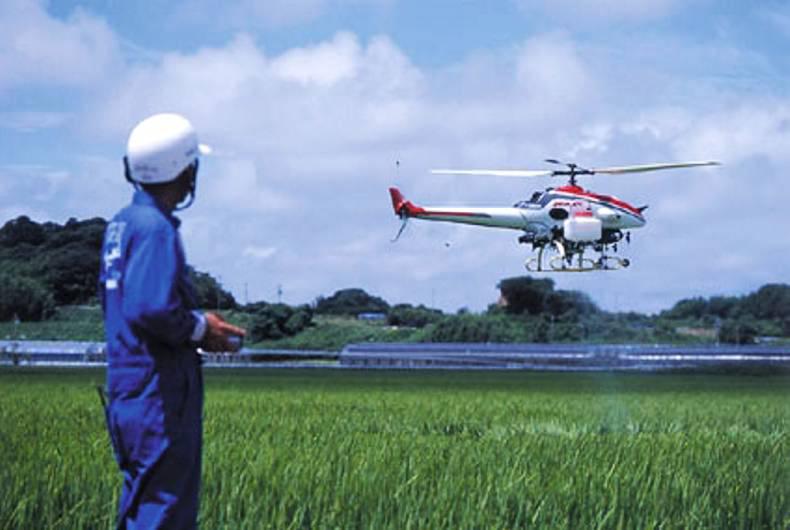

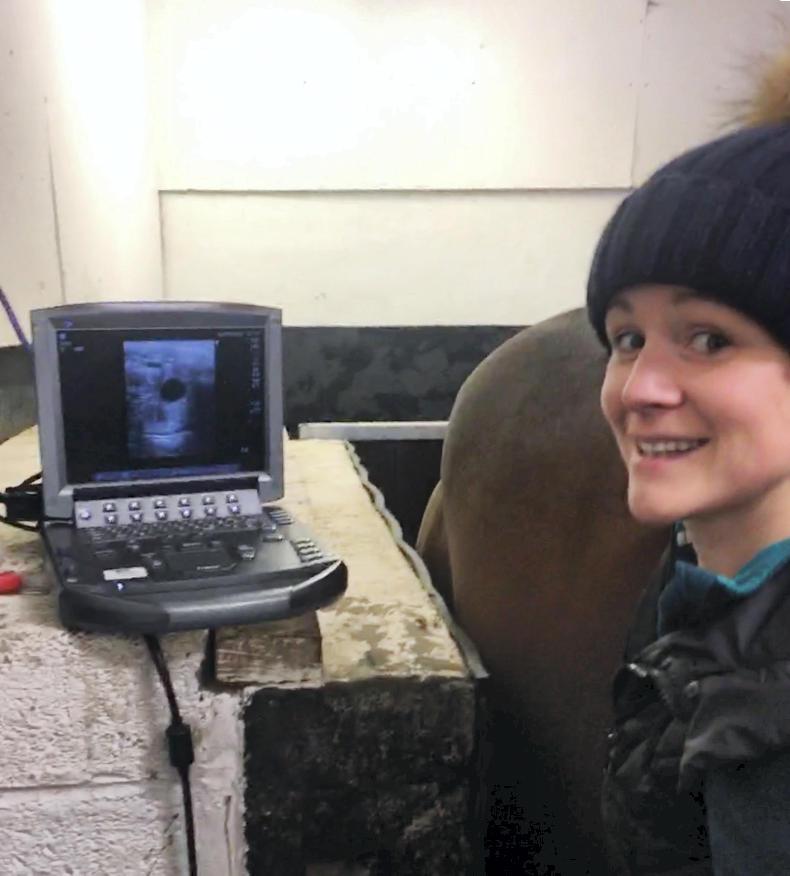
SHARING OPTIONS